Walking around Shenzhen construction and adaptations are on every street corner. It may not be shocking to most, as the city is the same age as Michael Phelps [just over 30 years old], so it is still establishing as a place to this day. However, the city has strict environmental provisions limiting its buildable land to only 7% of Shenzhen’s total land area (Zhou, 2014). City authorities have been greatly practicing the “out with the old and in with the new” across the city as it demolishes urban villages, tears down a 20 year old skyscrapers to replace it with a massive world-record-breaking buildings like Ping An Finance Centre at a towering 115 floors. Just down from Difu Hotel and UPDIS lies a superblock-sized, 50+ foot hole that I have been yelled at for attempting to photograph. It’s plans are unknown to me, but I imagine it will be a massive development towering over the 15-floor buildings adjacent.
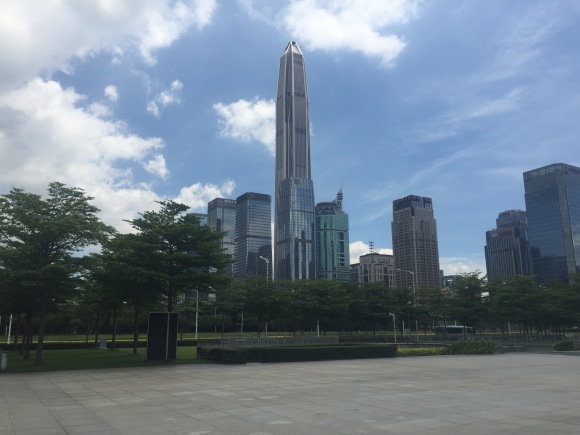
Ping An Finance Centre to open doors in late 2016.
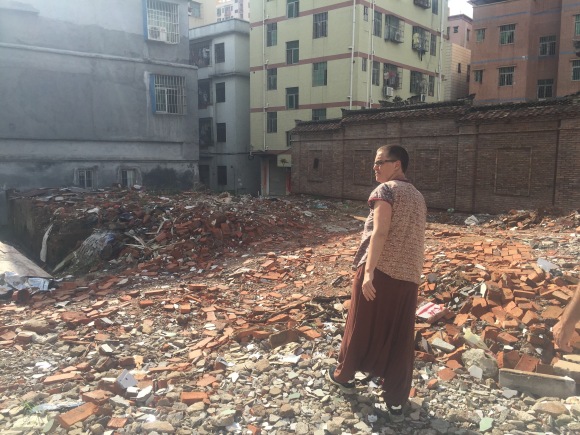
Mary Ann O’Donnell, anthropologist, curator, blogger, and urban village activist, stands in a demolished area in Langkou Urban Village.
It’s not to say all construction is of massive scale. Sometimes we see one or two people jack hammering away at the sidewalk tiles to replace them with mismatched cement. I always wonder how this coordination works for maintenance of things like this? Are people assigned an area and find random things to tear apart and return to the next day to repair? Is there a list of small projects to be repaired? How does this coordination fit within the larger picture?
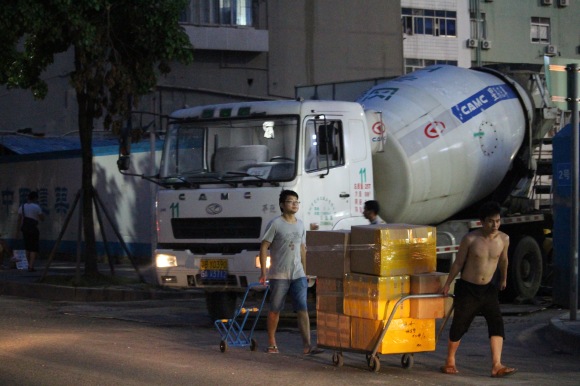
Cement truck forces pedestrians to the street in Futian District.
As it seems, construction vehicles are not regulated like other freight vehicles in the city. At any time of the day, a sidewalk could be blocked with a truck dumping tons of cement into the site, laying a brand new foundation. Additionally, many of these construction sites house workers which are usually migrants from rural communities within greater China. They live in temporary shipping container like housing that leaves a mark on the redevelopment when it is torn down. These migrants move from one job to the next just to make a living – they could be gone overnight.
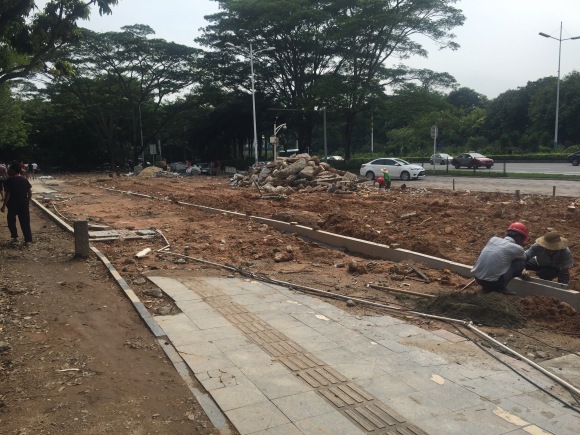
Sidewalk torn up to lay new lines underneath – not closed to pedestrians or cyclists though.
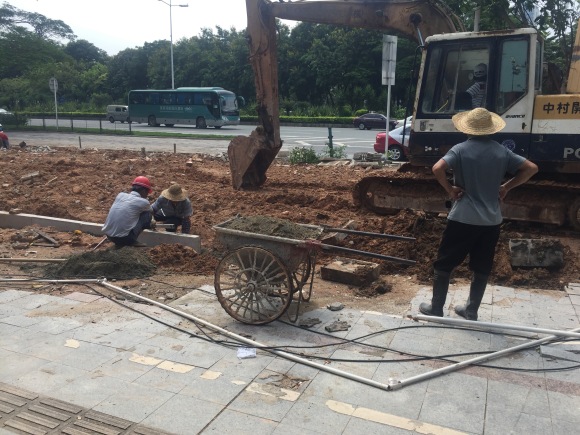
On a Sunday, these workers do not see a day of rest.
Shenzhen Bay Super Headquarters is visible from our tandem bike ride along the water. From afar, you can see 20+ cranes in the skyline. Before redevelopment began, the area was home to only 30,000 residents. Whereas now, it is expected to employ and house nearly 10 million people and 500 enterprises. The plan calls for high-quality construction that can last up to a century, but many people in Shenzhen argue that developers take a cheaper approach to save time and money to be able to move on to the next project. As you can imagine, this will lead to a lower quality of building in need of redevelopment in one or two decades. How ‘sustainable’.
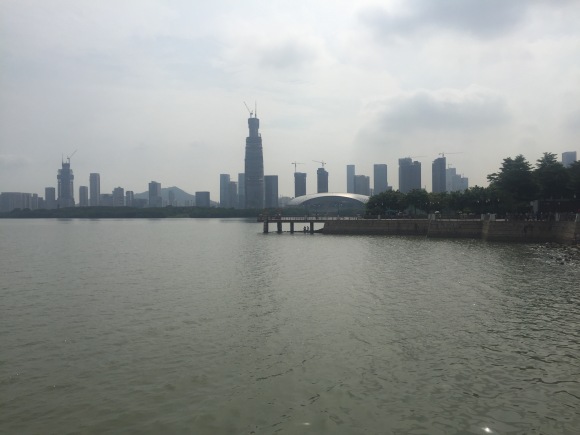
Across Shenzhen Bay, you can see the many, many cranes across the new skyline of Shenzhen Bay Super Headquarters.
So my questions I still ponder are: When will construction be tapped out? At the quality of design being implemented, can we ever expect to see a significant decrease in construction? How does coordination of authorities, developers, maintenance, water and sewerage services compare to that of the United States [something we are most criticized, our coordination between departments and services]? And of course the affordability component – all of this construction and redevelopment is making Shenzhen well on its way to a very expensive place to live. How will people survive here? Will a young person like myself, making an entry-level professional salary of maybe 8,000CNY be able to afford 4,000-6000CNY a month for rent? Urban Villages are being demolished right and left – where do these people go? Especially if they do not have urban residency, are they forced back to rural China? Will Shenzhen continue to conform to modern gentrification and displacement hardships we are trying to recover and mitigate in the United States?
I am anxious for people’s input regarding the topic, so please comment with your suggestions, theories, opinions, questions, etc.
Olivia H




Nice observation, Olivia! Chinese always complained that streets should all have a zipper openings. There is a discussion of building infrastructure tunnels in cities, and I am not sure how much that is for GDP and how much that is for solving the service problems.
LikeLike